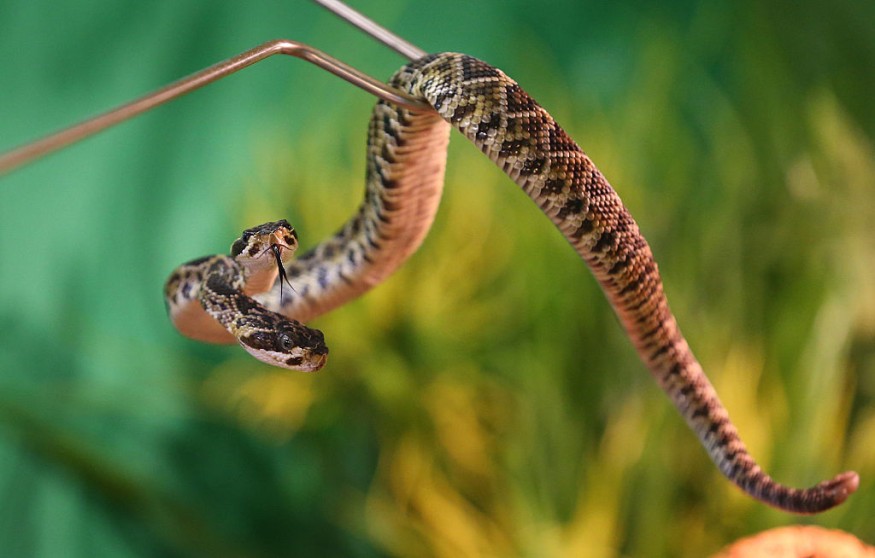Life is hard enough for a one-headed snake, and the addition of another head makes it more confusing for some. The two-headed snake is a rare but not unheard of animal that has been the inspiration of many myths. One that is recently making headlines is the two-headed snake in North Carolina.
Jimmy Mabe has experience in raising snakes and recently welcomed a two-headed Hondurian albino milk snake. He told CBS affiliate WGHP in High Point that the two heads of the snake each have their personality and one appears to be more dominant than the other. Mabe said that the right side is a little more aggressive than the left as it wants to try to bite him more.

Two Heads Mean Two Brains
North Carolina Museum of Natural Sciences collections manager for herpetology Jeff Beane said in an interview with Newsweek that he has seen a few two-headed snakes although they are a rare phenomenon. These creatures behave differently because they have different brains, which is why one could be more dominant than the other.
Despite their differences, the two heads rarely become aggressive toward each other. He added that two-headed snakes do not have much choice as they learn to survive with each other. However, they generally do not live very long in the wild; and even if they are in captivity, a two-headed snake still has a shorter lifespan than a typical one-headed snake.
Alexandria Zoo in Louisiana said that Honduran milk snakes are typically found in rotting logs or stumps. These non-venomous snakes have a diet that usually includes other snakes, lizards, and small mammals.
The zoo added that these snakes use quick, jerky movements to startle their prey. Mabe told WGHP that the two-headed snake shares a set of lungs and a stomach but has different brains that do not always agree. They sometimes could not agree on what direction to go.
Polycephaly Is an Anomaly, Not an Evolution
The condition of the two-headed snake is called polycephaly, a term derived from the Greek words for "many" and "heads." The process is the same as the one that forms conjoined twins, wherein a fertilized egg failed to completely split.
According to National Geography, about 75% of conjoined twins are stillborn or die after 24 hours. The point at which the embryo stops splitting could vary, such as in Siamese twins that can be joined at the head, breast, or hip.
The cause for such phenomenon is uncertain although some scientists say that captive inbreeding could lead to two-headed births. Researcher Van Wallach from Harvard University's Museum of Comparative Zoology said that there are no statistics available since most two-headed snakes cannot survive long after birth in the wild.
They guess that two-headed snakes are greater in captivity than in the wild. However, there is no way to test this because it is impossible to sample the unknown wild specimens.
Wallach pointed out that it is not evolved, which means that each head would be highly individual. Where the split occurs in the body determines how much duplication of organs there is and the degree of competition between the two heads. If the two heads are very close then it is going to be more difficult for them. But with more separation, they can act a little more independently.
RELATED ARTICLE: Rare Two-Headed Snake Found in a Garden Successfully Rehomed in South Africa
Check out more news and information on Polycephaly in Science Times.










